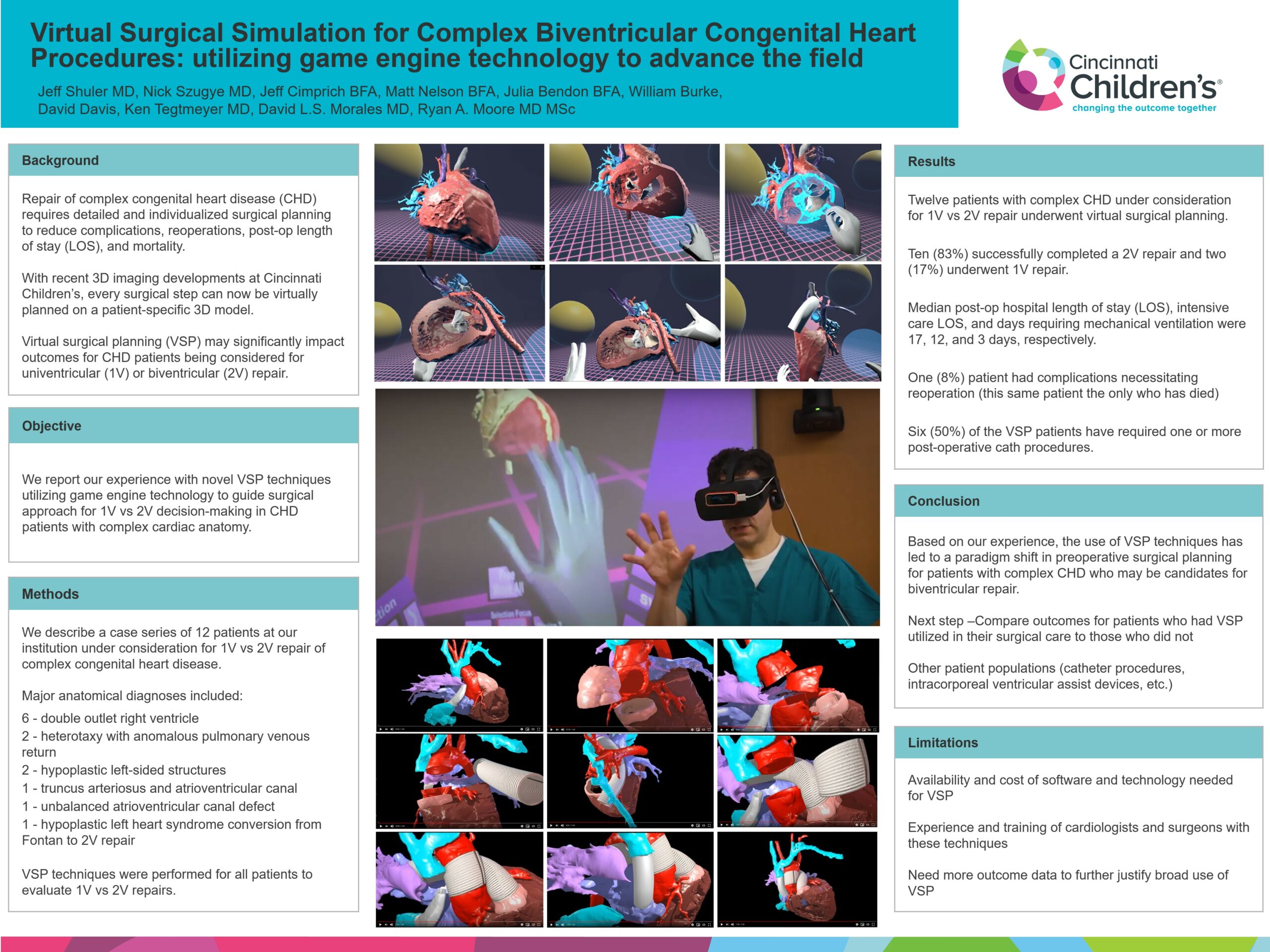Virtual Surgical Simulation for Complex Biventricular Congenital Heart Procedures: Utilizing Game Engine Technology to Advance the Field
Jeff Shuler, MD; Nick Szugye, MD; Jeff Cimprich, BF; Matt Nelson, BFA; Julia Bendon, BFA; William Burke; David Davis; Ken Tegtmeyer, MD; David L.S. Morales, MD; Ryan A. Moore, MD, MSc

Advanced imaging technology can be used for “virtual surgical simulation” in planning optimal repairs for some especially complex congenital heart lesions.
-Jeffrey Shuler, MD
Abstract
Background: Repair of complex congenital heart disease (CHD) requires detailed and individualized surgical planning to reduce complications, reoperations, post-op length of stay (LOS), and mortality. With recent 3D imaging developments by our group, every surgical step can now be virtually planned on a patient-specific 3D model. Virtual surgical planning (VSP) may significantly impact outcomes for CHD patients being considered for univentricular (1V) or biventricular (2V) repair.
Objective: We report our experience with novel VSP techniques utilizing game engine technology to guide surgical approach for 1V vs 2V decision-making in CHD patients with complex cardiac anatomy.
Methods: We describe a case series of 12 patients at our institution under consideration for 1V vs 2V repair of complex congenital heart disease. Major anatomical diagnoses included six patients with double outlet right ventricle, two with heterotaxy and anomalous pulmonary venous return, two with small left-sided structures, one with truncus arteriosus and atrioventricular canal, and one with unbalanced atrioventricular canal defect. One patient with hypoplastic left heart syndrome was undergoing conversion from a Fontan to a 2V repair. VSP techniques were performed for all patients to evaluate 1V vs 2V repairs.
Results: Twelve patients with complex CHD under consideration for 1V vs 2V repair underwent virtual surgical planning. Ten (83%) successfully completed a 2V repair and two (17%) underwent 1V repair. Median post-op hospital length of stay (LOS), intensive care LOS, and days requiring mechanical ventilation were 17, 12, and 3 days, respectively. Only one (8%) of the VSP patients had complications necessitating reoperation and this same patient was the only who has died. Six (50%) of the VSP patients have required one or more post-operative cath procedures.
Conclusions: Based on our experience, the use of VSP techniques has led to a paradigm shift in preoperative surgical planning for patients with complex CHD who may be candidates for biventricular repair.